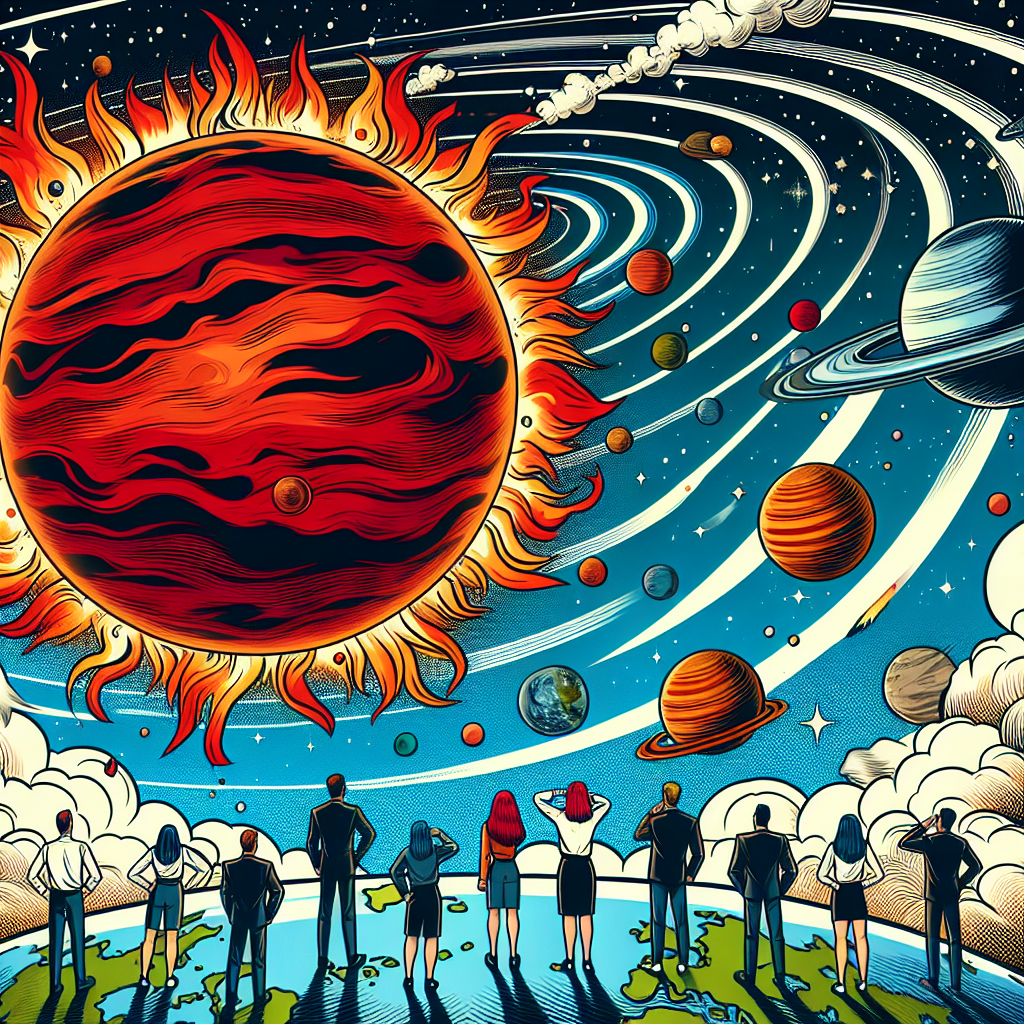The sun, our benevolent ball of hot, glowing gas, is the very reason we're here. It's the source of energy for our planet, and we're stuck to it like moths to a flame. But, as with all good things, its reign must come to an end. In about five billion years, the sun will exhaust its fuel, and that's when things get interesting.
Imagine a fire that's been burning brightly for millions of years. At some point, the fuel starts to run low, and the flames begin to dwindle. That's roughly what's happening with the sun as it ages. As the hydrogen fuel dwindles, the sun will start to burn helium, which will make it expand to about 100 times its current size.
This new, larger sun will be a red giant, with a surface temperature about half of what it is now. Think of a glowing ember, rather than a fiery spark. The color will shift from a bright yellow to a deep orange or red, which is where it gets its name. It's not that the sun will be a giant in the classical sense, but it will have grown to an enormous size, engulfing the inner planets, including Mercury and Venus.
Now, what does this mean for Earth? Well, let's just say we won't be enjoying those sunny days at the beach anymore. The increased heat and radiation will make our planet uninhabitable, and the expanded sun will likely engulf our orbit, possibly even reaching the orbit of Mars. It's not a pretty picture.
Here's a rough timeline of what we can expect:
- In about 1 billion years, the sun will start to run low on hydrogen, and the expansion will begin.
- In about 2.5 billion years, the sun will have exhausted its fuel and will start to expand rapidly.
- In about 5 billion years, the sun will reach its maximum size, engulfing the inner planets.
Now, don't panic just yet. We've got a few billion years to figure out a way to avoid this cosmic apocalypse. Who knows? Maybe we'll find a way to migrate to another planet or create a Dyson sphere around the sun to harness its energy. The possibilities are endless, and that's what makes this so exciting.
But what about the other planets in our solar system? Will they be affected by the sun's transformation? The answer is yes, but to varying degrees. The outer planets, like Jupiter and Saturn, will still be far enough away to avoid the sun's expanded reach. They might even gain a new, temporary atmosphere as the sun's outer layers are lost to space.
On the other hand, the inner planets, like Mercury and Venus, will be toast. They'll be engulfed by the sun's expanded atmosphere, and their surfaces will be scorched beyond recognition. It's a grim fate, but that's the way the cosmos crumbles sometimes.
Now, let's talk about the sun's mass loss during this period. As it expands, it will shed about half of its mass into space. This might not seem like a big deal, but it has significant implications for the entire solar system. The orbits of the planets will be affected, and the sun's gravitational pull will weaken.
Imagine a giant, cosmic game of pool, where the balls are the planets, and the cue stick is the sun's gravity. As the sun loses mass, the cue stick gets lighter, and the balls start to move more freely. It's a delicate dance, and one that will continue to shape the solar system for billions of years.
In the end, the sun's transformation into a red giant will be a gradual process that will reshape our understanding of the cosmos. It's a reminder that even the most seemingly permanent fixtures in our universe are subject to change and transformation. And who knows? Maybe, just maybe, we'll learn to harness the power of the sun in ways we can't even imagine yet.
In the meantime, let's enjoy the sunshine while it lasts, and appreciate the delicate balance that makes our existence possible. The sun might be a burning ball of hot, glowing gas, but it's our burning ball of hot, glowing gas, and we're stuck to it like moths to a flame.

Popular Space Questions
Find answers to the trending space questions being asked by our community on social media.
- How many galaxies are there in the universe?
- How far is Pluto from Earth?
- How many planets are in the Milky Way?
- What would happen if a rogue planet entered our solar system?
- How many planets are in our solar system?
- How big is the Earth?
- What are the planets in order?
- What if we found a way to manipulate gravity?
- What would happen if a pulsar's beam hit Earth?
- How big is the universe?